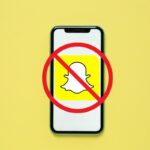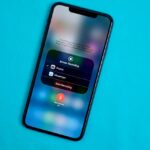Are you struggling to delete hidden apps on your iPhone? You’re not alone. Many users find it challenging to remove apps that seem invisible or unreachable on their device. In this article, we aim to simplify this process and show you how to delete apps on iPhone that are hidden. Whether it’s a storage issue or you just want to declutter and organize, we’ve got you covered.
Our step-by-step guide below will help you traverse through the various sections of your iPhone to locate and delete hidden apps effectively. Whether you’re using the App Library, iPhone Settings, or the Home Screen, we’ll provide easy-to-follow instructions to help you clean up your device efficiently.
So, let’s get started! Say goodbye to unwanted hidden apps and make your iPhone experience even better with our helpful tips. We’re confident that by the end of this article, you’ll master the art of deleting hidden apps and regain control of your iPhone’s precious storage space.
Post Contents
Locating Hidden Apps on iPhone
In this section, we will go through three different methods to locate hidden apps on your iPhone: using the App Library, using Spotlight Search, and checking folders.
Using the App Library
Introduced in iOS 14, the App Library is a convenient feature that automatically organizes your apps and helps you find hidden ones. Here’s how to access it:
- Swipe left on your Home Screen until you reach the App Library.
- Tap the search field at the very top to type in the app’s name.
- The search results will show matching apps, including hidden ones.
Using Spotlight Search
Spotlight Search is another easy way to locate hidden apps on an iPhone. Follow these steps:
- Swipe down on your Home Screen or tap the Search icon at the bottom.
- Type the name of the hidden app in the Spotlight Search Bar on top.
- The app icon should appear in the search results, even if it’s hidden.
Checking Folders
Finally, you can manually explore folders on your Home Screen to locate hidden apps. Sometimes, apps are hidden within folders, making them harder to find. To search for an app in a folder:
- Look for folders on your Home Screen with app icons.
- Open each folder and browse through the apps inside.
- If you find the hidden app, you can move it out of the folder or delete it as needed.
Remember to follow these methods to locate hidden apps on your iPhone. Once you find the hidden apps, you can decide whether to keep or delete them based on your preferences.
How to Delete Apps on iPhone That Are Hidden
From the Home Screen
To delete hidden apps from your iPhone’s home screen, follow these steps:
- Swipe down on any home screen.
- Start typing the app’s name in the search bar.
- When the app icon appears below the search bar, long-press the icon.
- In the pop-up menu, choose “Delete App” at the bottom.
From the App Library
You can also delete hidden apps from your iPhone’s App Library:
- Swipe left until you reach the App Library.
- Type the app name in the search bar at the top.
- Long-press the app icon when it appears.
- Select “Delete App” in the context menu that appears.
From iPhone Storage
Lastly, you can delete hidden apps through the iPhone Storage settings:
- Open the “Settings” app on your iPhone.
- Tap “General.”
- Tap “iPhone Storage.”
- Scroll through the list and find the app you want to delete.
- Tap on the app.
- Choose “Delete App” at the bottom.
By following these steps, you should be able to delete hidden apps from your iPhone with ease. Remember to carefully read through the list of apps before deleting as it includes both default Apple apps and third-party apps.
Hiding and Organizing Apps
In this section, we’ll guide you through two methods of hiding and organizing apps on your iPhone – Using Folders and Removing Apps from the Home Screen. These techniques will help you maintain a clean and organized iPhone interface.
Using Folders
Creating folders on your iPhone home screen is a great way to keep similar apps organized and easily accessible. Follow these steps to create a folder on your iPhone:
- To create a folder, tap and hold an app until it starts to jiggle.
- Drag the app over another similar app and release your finger.
- A new folder containing both apps will be created, and you can now add a custom name for the folder.
- To add more apps, simply drag them into the folder while the apps are still jiggling.
- To exit the editing mode, tap
Doneon iPhones with Face ID, or press the Home button on iPhones with Touch ID.
Removing Apps from the Home Screen
Starting with iOS 14, you can remove apps from the home screen without actually uninstalling them. They will still be available in the App Library. Here’s how to do it:
- Tap and hold an app icon on the home screen until it starts to jiggle.
- Tap the
-(minus) symbol in the top-left corner of the app. - Choose
Remove from Home Screento hide the app from the home screen. - To exit the editing mode, tap
Doneon iPhones with Face ID or press the Home button on iPhones with Touch ID.
Your chosen app is now hidden from the home screen but is still accessible from the App Library. To access the App Library, go to the last page of your home screen pages and swipe left once more. You can also use the search bar at the top of the App Library to quickly find the hidden app.
These methods provide a user-friendly way to customize your iPhone experience and manage your apps more efficiently. Experiment with different folder names and app arrangements to create a personalized user interface that suits your preferences.
Managing Storage and Updates
There are several ways through which you can manage storage and updates on your iPhone or iPad device. This article covers essential sub-sections to help you understand these processes and optimize your iPhone for better usage.
Checking App Storage
To check your storage usage, you need to:
- Open the Settings app on your iPhone or iPad.
- Tap on General.
- Select iPhone Storage (or iPad Storage if using an iPad).
This will display a list of apps and their respective storage usage. You can also view storage categories, such as Mail, iCloud, and local storage.
Freeing Up Space
When you need to free up space on your iPhone or iPad, follow these steps:
- Go to Settings > General > iPhone Storage (or iPad Storage).
- Scroll through the list of apps
- Tap on an app you want to offload.
- Tap on “Offload App” to preserve app data while freeing up storage space on your device.
To delete hidden apps, refer to the following steps:
- In the iPhone Storage (or iPad Storage) page, scroll to locate the hidden app you want to delete.
- Tap on the app.
- Tap on “Delete App” and confirm the action.
Available Updates
To check and download available app updates on your iPhone or iPad:
- Open the App Store.
- Tap your profile icon in the top-right corner.
- Under the “Available Updates” section, you’ll find a list of apps with pending updates.
- You can either tap “Update” for individual apps or “Update All” to update every app in the list.
Recently Updated Apps
Using the same App Store interface, you can also see which apps have been recently updated:
- Open the App Store.
- Tap your profile icon in the top-right corner.
- In the “Updated Recently” section, you’ll find a list of apps that have been updated, along with the date and version number.
By following these guidelines, you can efficiently manage your iPhone or iPad storage and stay up to date with the latest app updates.
Using Spotlight Search for Quick Access
One efficient way to delete hidden apps on your iPhone is by using Spotlight Search for quick access. Spotlight Search enables users to locate and manage apps that might not readily appear on their home screen. To utilize this feature, follow these steps:
- Activate Spotlight Search: Swipe down on your iPhone Home Screen or tap the Search icon at the bottom.
- Find the hidden app: Type the name of the hidden app in the Spotlight Search Bar on top. This will display search results, including the app you’re looking for.
- Delete the app: After locating the app, press and hold the app icon. A menu with multiple options will appear. Tap “Delete App” and then “Delete” again to confirm your selection.
By using Spotlight Search, you can save time locating hidden apps and easily manage your device’s storage. Remember to keep this handy tool in mind whenever you need to find and delete hidden apps on your iPhone.
Conclusion
In conclusion, deleting hidden apps on your iPhone can be accomplished through a few simple steps. Firstly, you can utilize the App Library to locate and remove hidden apps. Access the App Library by scrolling to the right until you reach it. Swipe down to find your desired app in alphabetical order, then touch and hold the app icon to delete it.
Another approach for deleting hidden apps is by using Spotlight Search. Swipe down on your iPhone Home Screen or tap the Search icon at the bottom. Type the name of the hidden app in the search bar and wait for the app icon to appear. Touch and hold the app icon, then select “Delete App” to remove it from your device.
Yet another option is to use the Settings app to delete hidden apps. Launch the Settings app, open the General menu, and select iPhone Storage. Allow it to display all the apps on your device. Find the app you want to delete, tap on it, and choose “Delete App” from the pop-up menu.
Remember that managing the apps on your iPhone is crucial for maintaining its performance and efficiency. By following these methods, you can ensure that your iPhone remains clutter-free and runs smoothly.






























